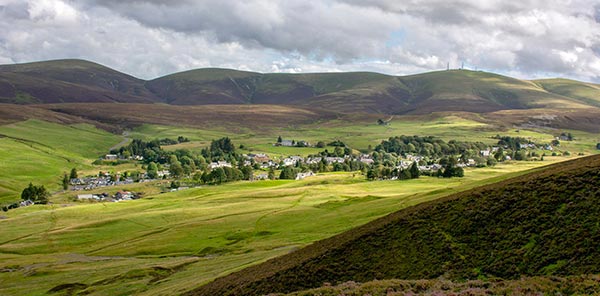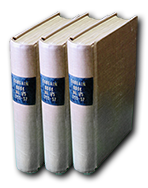The Bargain System and Bargain Books
A bargain is an arrangement or contract between the company and a group of miners (at Leadhills usually 8) to undertake a specific piece of work.
For each bargain, 2 men at a time worked underground each working a 6 hour day. They worked round the clock: 12 midnight – 6am; 6am – 12 noon; noon – 6pm; 6pm – 12 midnight (four, 6 hour shifts of 2 men each so the 8 men shared the 24hr working day).
Bargains took two forms: tutwork and tribute.
Tutwork:
The miners were paid according to measure (i.e. weight of ore or distance of ground worked).
For levels or shafts, overseer specified dimensions, e.g. 7 x 5 feet. Miners paid at so much per fathom.
For stoping or roosting, the miners were paid so much per square fathom (6 feet x 6 feet x width of vein) plus a proportion of the value of ore per bing (8 cwts) as an incentive not to waste ore. The cost of tools, gunpowder, candles, etc. were deducted (as these were supplied by the company).
Example:
24 March 1770. “To Wm Whitfield & 7 more to drive 5 fms [fathoms] further to the N. from Whigham’s Sump under the High Level of Susanna Vein in Glendorch ground at 55/- per Fm and 5/- per bing [8 cwt] of ore.”
Tribute:
Paid according to value. Miners would receive a certain proportion of the value of the lead ore raised (usually the smelted lead). E.g. Tribute of 5/- in £.
The miners or ‘tributers’ or ‘adventurers’ usually worked in abandoned parts of the mines, particularly after the 1850s. They often worked on their own behalf, selling the ore they raised to the company and had to be self-reliant and discover ore for themselves.
Location
15 Main Street,
Leadhills,
South Lanarkshire
Scotland ML12 6XP
Opening Hours
Saturdays and Sundays
2pm to 5pm.
May to September.
Visits by appointment can be arranged throughout the year.
The Bargain Books and Mining Journals
The day-to-day working of the mines is recorded in the Journals and Bargain Books preserved in the library. These describe in detail every piece of work undertaken in the mines and the names of the miners involved.
The Bargain Books and Journals can be explored here: Select a date range and click on the book image to explore.
Leadhills Mining Journals
Leadhills Bargain Books
Leadhills Miners' Library is the World's first library for working people.
Alongside our collection of some 2500 books dating back to the 18th Century, the library contains many historical archives and photographs as well as a display of rare minerals connected to the local mining industry.
We also hold a 46 volume collection of mining journals and bargain books, recording contracts between the mine managers and miners from 1737-1854. It is the largest collection of its kind in Scotland and one of the largest in Britain.
Local Leadhills and Wanlockhead Links
Lead Mining Museum: https://www.leadminingmuseum.co.uk/
Leadhills Railway: https://www.leadhillsrailway.co.uk/
Ski Club: https://skiclub.lowtherhills.com/
Hopetoun Arms Hotel: https://www.hopetounarms.co.uk

